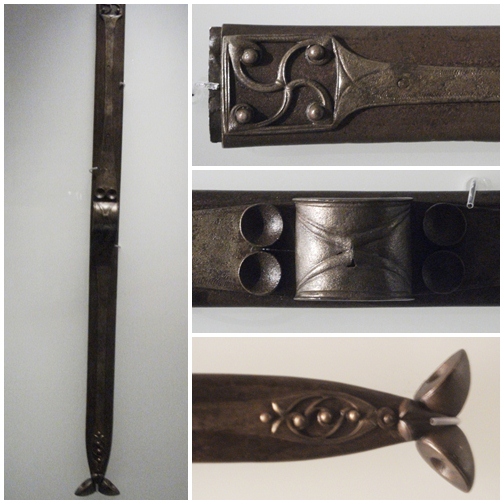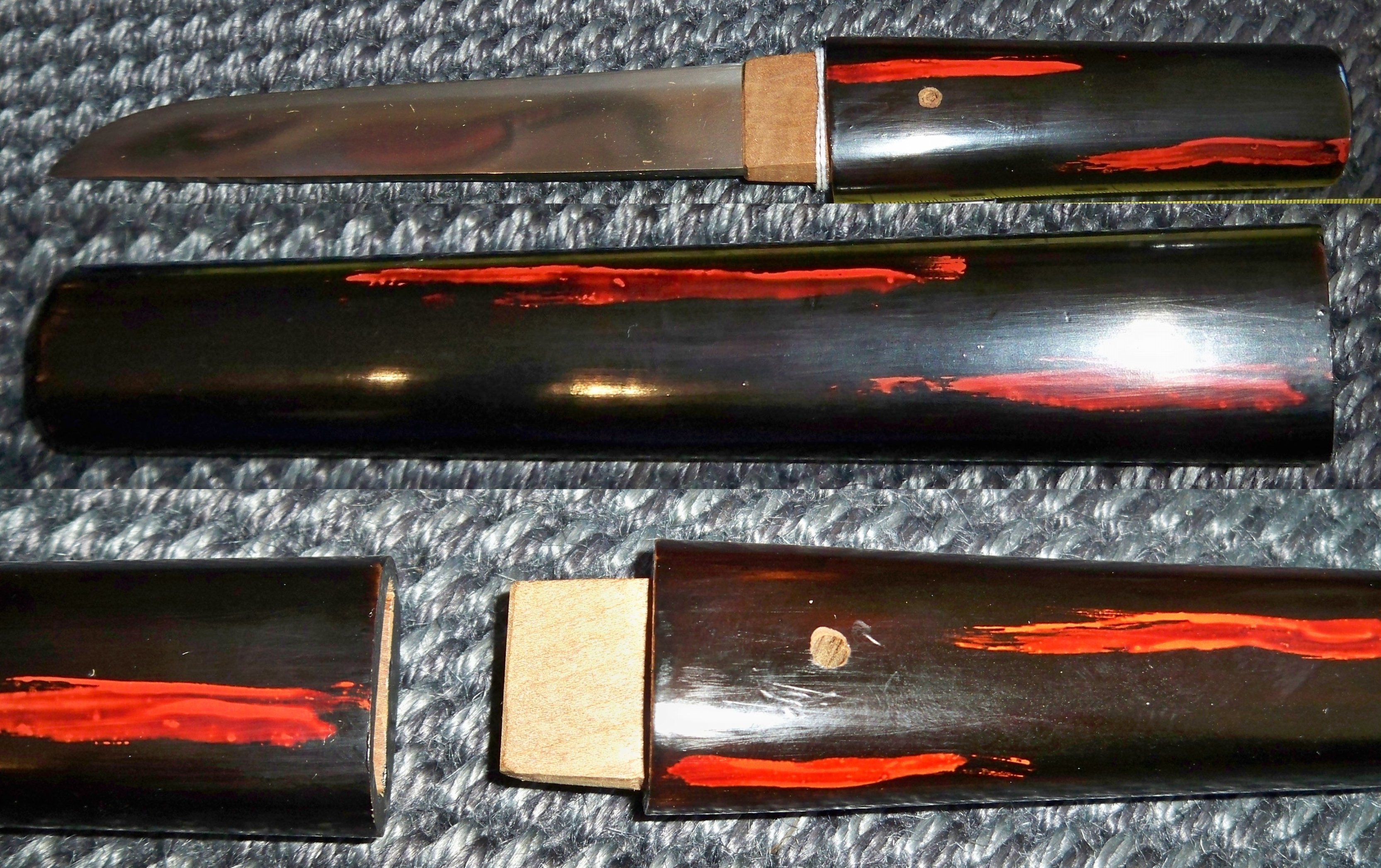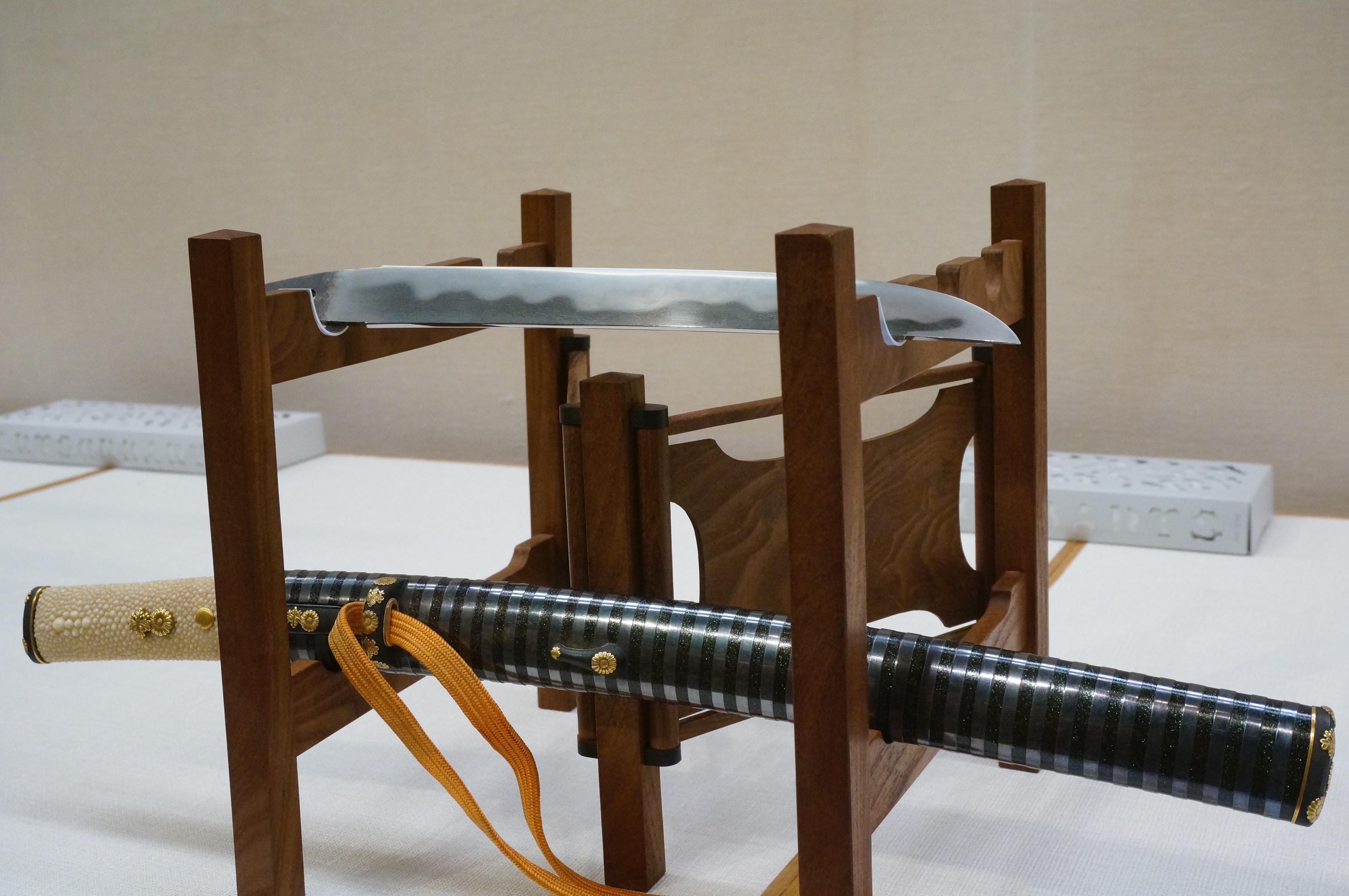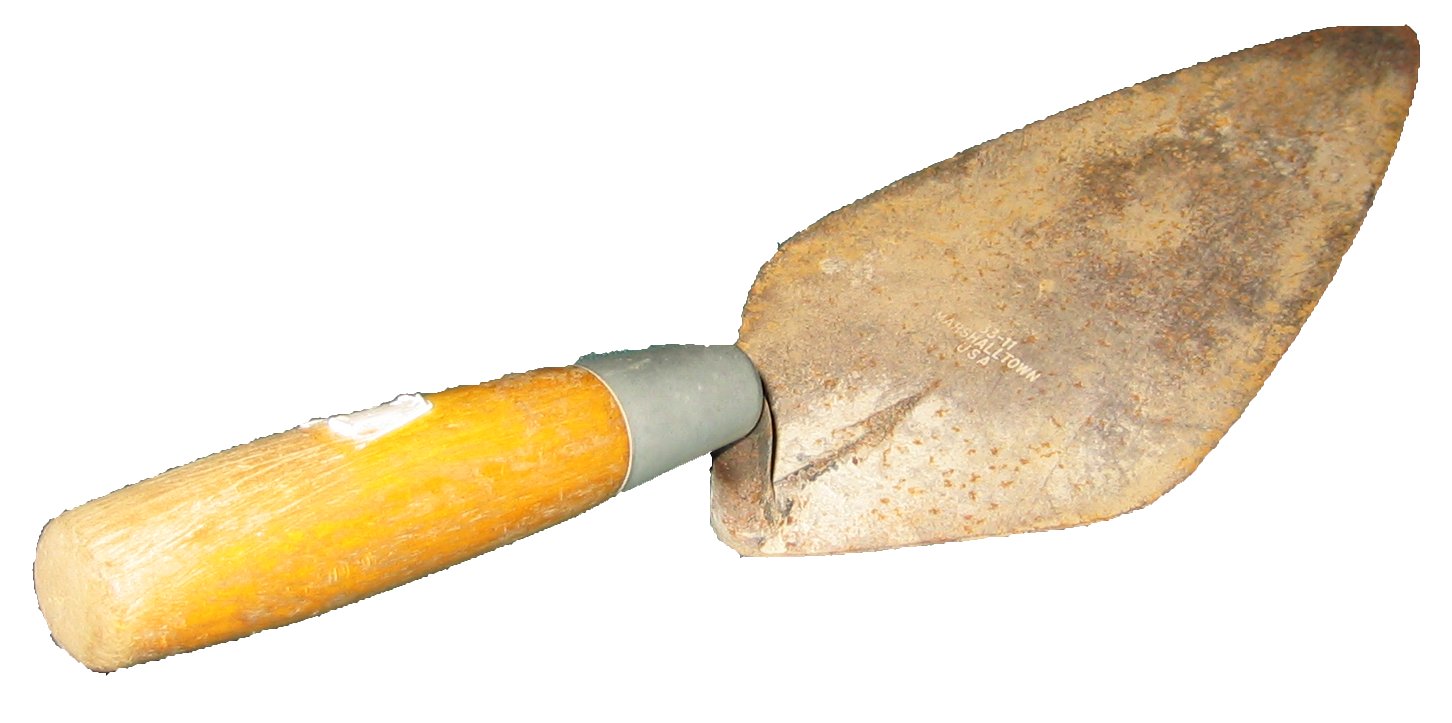|
Hori Hori
A ''hori-hori'', sometimes called a "soil knife" or a "weeding knife", is a heavy serrated multi-purpose steel blade for gardening jobs such as digging or cutting. The blade is sharp on both sides and comes to a semi-sharp point at the end. History and etymology The ''hori-hori'' digging tool, first implemented in Japan, was initially used to excavate plants such as '' sansai'' in the mountains carefully. The word ''hori'' (ホリ) means "to dig" in Japanese, and "hori-hori" is an onomatopoeia for a digging sound. The tool itself is commonly referred to in Japan as a or . Description and uses The ''hori-hori'' has uses in gardening such as weeding, cutting roots, transplanting, removing plants, sod cutting, and splitting perennials. The blade is made of concave-shaped carbon or stainless steel, making it ideal for digging and prying. The blade has a large, smooth wooden handle for comfortable use with one hand. It can serve as a small hand axe. The tool's total length varies ... [...More Info...] [...Related Items...] OR: [Wikipedia] [Google] [Baidu] |
Knife
A knife (: knives; from Old Norse 'knife, dirk') is a tool or weapon with a cutting edge or blade, usually attached to a handle or hilt. One of the earliest tools used by humanity, knives appeared at least Stone Age, 2.5 million years ago, as evidenced by the Oldowan tools. Originally made of wood, bone, and stone (such as flint and obsidian), over the centuries, in step with improvements in both metallurgy and manufacturing, knife blades have been made from copper, bronze, iron, steel, ceramic, and titanium. Most modern knives have either fixed or folding blades; blade patterns and styles vary by maker and country of origin. Knives can serve various purposes. Hunters use a hunting knife, soldiers use the combat knife, scouts, campers, and hiking, hikers carry a pocketknife; there are kitchen knives for preparing foods (the chef's knife, the paring knife, bread knife, cleaver), table knife (butter knives and steak knives), weapons (daggers or switchblades), knives for throwing o ... [...More Info...] [...Related Items...] OR: [Wikipedia] [Google] [Baidu] |
Sansai
is a Japanese language, Japanese word literally meaning "mountain vegetables", originally referring to vegetables that grew naturally, were foraged in the wild, and not grown and harvested from fields. However, in modern times, the distinction is somewhat blurred, as some ''sansai'' such as ''warabi'' have been successfully cultivated. For example, some of the fern shoots such as bracken (Fiddlehead fern, fiddlehead) and ''zenmai'' shipped to market are farm-grown. They are often sold pre-cooked in water, and typically packaged in plastic packs in liquid. The fern shoots ''warabi'' (bracken), ''fuki'' stalks in sticks, and mixes which may contain the above-mentioned combined with baby bamboo shoots, mushrooms, etc., are available in retail supermarkets, and ethnic foodstores in the US. ''Sansai'' are often used as ingredients in Buddhist vegetarian cuisine known as Buddhist cuisine, shōjin ryōri. Examples Sansai include: * ''Chishimazasa'' (チシマザサ), ''Nemagarid ... [...More Info...] [...Related Items...] OR: [Wikipedia] [Google] [Baidu] |
Onomatopoeia
Onomatopoeia (or rarely echoism) is a type of word, or the process of creating a word, that phonetics, phonetically imitates, resembles, or suggests the sound that it describes. Common onomatopoeias in English include animal noises such as Oink (sound), ''oink'', ''meow'', ''roar'', and ''Bird vocalization, chirp'', among other sounds such as ''Beep (sound), beep'' or ''hiccup''. Onomatopoeia can differ by language: it conforms to some extent to the broader natural language, linguistic system. Hence, the sound of a clock may be expressed variously across languages: as ' in English language, English, in Spanish language, Spanish and Italian language, Italian (see photo), in Standard Chinese, Mandarin, in Japanese language, Japanese, or in Hindi, Urdu, and Bengali language, Bengali. Etymology and terminology The word ''onomatopoeia'', with rarer spelling variants like ''onomatopeia'' and ''onomatopœia'', is an English word from the Ancient Greek language, Ancient Greek com ... [...More Info...] [...Related Items...] OR: [Wikipedia] [Google] [Baidu] |
Perennial Plant
In horticulture, the term perennial (''wikt:per-#Prefix, per-'' + ''wikt:-ennial#Suffix, -ennial'', "through the year") is used to differentiate a plant from shorter-lived annual plant, annuals and biennial plant, biennials. It has thus been defined as a plant that lives more than 2 years. The term is also loosely used to distinguish plants with little or no woody growth (secondary growth in Tree girth measurement, girth) from trees and shrubs, which are also technically ''perennials''. Notably, it is estimated that 94% of plant species fall under the category of perennials, underscoring the prevalence of plants with lifespans exceeding two years in the botanical world. Perennials (especially small flowering plants) that grow and bloom over the spring and summer, die back every autumn and winter, and then return in the spring from their rootstock or other overwintering structure, are known as Herbaceous plant, herbaceous perennials. However, depending on the rigours of the loca ... [...More Info...] [...Related Items...] OR: [Wikipedia] [Google] [Baidu] |
Scabbard
A scabbard is a sheath for holding a sword, dagger, knife, or similar edged weapons. Rifles and other long guns may also be stored in scabbards by horse riders for transportation. Military cavalry and cowboys had scabbards for their saddle ring carbines and rifles for transportation and protection. Scabbards have been made of many materials over the millennia, including leather, wood, and metal such as brass or steel. Most commonly, sword scabbards were worn suspended from a sword belt or shoulder belt called a baldric. Antiquity Scabbards have at least been around since the Bronze Age, and are thought to have existed as long as the blade has. Wooden scabbards were typically covered in fabric or leather; the leather versions also usually bore metal or leather fittings for added protection and carrying ease. All-metal scabbards were popular items for a display of wealth among elites in the European Iron Age, and often intricately decorated. Little is known about the scabbards ... [...More Info...] [...Related Items...] OR: [Wikipedia] [Google] [Baidu] |
Serrated Blade
Serration is a saw-like appearance or a row of sharp or tooth-like projections. A serrated cutting edge has many small points of contact with the material being cut. By having less contact area than a smooth blade or other edge, the applied pressure at each point of contact is greater, and the points of contact are at a sharper angle to the material being cut. This causes a cutting action that involves many small splits in the surface of the material being cut, which cumulatively serve to cut the material along the line of the blade. Serration in nature In nature, serration is commonly seen in the cutting edge on the teeth of some species, usually sharks. However, it also appears on non-cutting surfaces, for example, in botany where a toothed leaf margin or other plant part, such as the edge of a carnation petal, is described as being serrated. A serrated leaf edge may reduce the force of wind and other natural elements. Probably the largest serrations on Earth occur on the s ... [...More Info...] [...Related Items...] OR: [Wikipedia] [Google] [Baidu] |
Kaiken (dagger)
A is a long, single or (very rarely) double-edged Japanese knife usually without ornamental fittings housed in a plain but lacquered mount. Uses The was once carried by men and women of the samurai class in Japan. It was useful for self-defense in indoor spaces where the long-bladed katana and intermediate-length were inconvenient. Women carried them in their kimono either in a pocket-like space () or in the sleeve pouch () for self-defense and for ritual suicide by slashing the veins in the left side of the neck. When a samurai woman married, she was expected to carry a with her when she moved in with her husband. The was also carried concealed in its by the lower classes who were not permitted to wear swords, in particular by criminals in the Edo period. In modern Japan, a is worn as a traditional accessory for the (referee) in sumo matches for the highest ranks. However, a real blade is not used. No one legally wears or carries a today in Japan, as this is a vio ... [...More Info...] [...Related Items...] OR: [Wikipedia] [Google] [Baidu] |
Kunai
A is a Japanese multipurpose tool and weapon thought to be originally derived from the masonry trowel. Design A ''kunai'' normally had a leaf-shaped wrought blade in lengths ranging from and a handle with a ring on the pommel for attaching a rope. The attached rope allowed the ''kunais handle to be wrapped to function as a grip, or to be strapped to a stick as a makeshift spear; to be tied to the body for concealment; to be used as an anchor or piton, and sometimes to be used as the Chinese rope dart. Variants Varieties of ''kunai'' include short, long, narrow-bladed, saw-toothed, and wide-bladed. The two widely recognized kinds are the short ''kunai'' (小苦無 shō-''kunai'') and the big ''kunai'' (大苦無 ''dai-kunai''). In some cases, the ''kunai'' and the ''Nishikori'', a wide-bladed saw with a dagger-type handle, are difficult to distinguish. Uses Contrary to popular belief, ''kunai'' were not designed to be used primarily as throwing weapons. Instea ... [...More Info...] [...Related Items...] OR: [Wikipedia] [Google] [Baidu] |
Tantō
A is a traditionally made Japanese knife () that was worn by the samurai class of feudal Japan. The dates to the Heian period, when it was mainly used as a weapon but evolved in design over the years to become more ornate. were used in traditional martial arts () and in the ''seppuku'' suicide ritual. The term has seen a resurgence in the West since the 1980s as referring to a point style of modern tactical knives, designed for piercing or stabbing, though the style is not present on any traditional tantō. A Tanto knife may refer to an American style of blade based of the Japanese , usually with a squared rather than curved tip. Description The is a single or double edged dagger with a length between (1 Japanese ). The was designed primarily as a stabbing weapon, but the edge can be used for cutting, slashing as well. are generally Forging, forged in the style (without a ridgeline), meaning that their sides have no ridge line and are nearly flat, unlike the structur ... [...More Info...] [...Related Items...] OR: [Wikipedia] [Google] [Baidu] |
Trowel
A trowel is a small hand tool used for digging, applying, smoothing, or moving small amounts of viscous or particulate material. Common varieties include the masonry trowel, garden trowel, and float trowel. A power trowel is a much larger gasoline or electrically powered walk-behind device with rotating paddles used to finish concrete floors. Hand trowel Numerous forms of trowel are used in masonry, concrete, and drywall construction, as well as applying adhesives such as those used in tiling and laying synthetic flooring. Masonry trowels are traditionally made of forged carbon steel, but some newer versions are made of cast stainless steel, which has longer wear and is rust-free. These include: *Bricklayer's trowel has an elongated triangular-shaped flat metal blade, used by stonemason, masons for leveling, spreading, and shaping cement, plaster, and mortar (masonry), mortar. *Pointing trowel, a scaled-down version of a bricklayer's trowel, for small jobs and repair wo ... [...More Info...] [...Related Items...] OR: [Wikipedia] [Google] [Baidu] |
Gardening Tools
Gardening is the process of growing plants for their vegetables, fruits, flowers, herbs, and appearances within a designated space. Gardens fulfill a wide assortment of purposes, notably the production of aesthetically pleasing areas, medicines, cosmetics, dyes, foods, poisons, wildlife habitats, and saleable goods (see market gardening). People often partake in gardening for its therapeutic, health, educational, cultural, philosophical, environmental, and religious benefits. Gardening varies in scale from the 800 hectare Versailles gardens down to container gardens grown inside. Gardens take many forms; some only contain one type of plant, while others involve a complex assortment of plants with no particular order. Gardening can be difficult to differentiate from farming. They are most easily differentiated based on their primary objectives. Farming prioritizes saleable goods and may include livestock production, whereas gardening often prioritizes aesthetics and lei ... [...More Info...] [...Related Items...] OR: [Wikipedia] [Google] [Baidu] |








